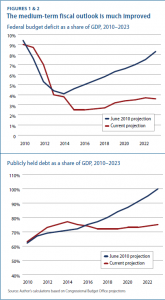The market has spoken: tolerance is good for business.
Most major corporations have strong anti-discrimination policies. Most have active minority recruitment and retention policies. And increasingly, many support providing benefits for domestic partners.
According to DiversityInc.com, most major companies are committed to diversity it the workplace, though they admit that many companies do fall short. Most try because they understand the importance of a diverse workforce. Virtually all companies, large and small, have anti-discrimination policies, and increasingly those policies cover discrimination based on gender or sexual orientation. According to the Equity Forum, in 2012, 483 of the Fortune 500 companies specifically included sexual orientation in their anti-discrimination policies. (www.equityforum.com/fortune500)
A significant majority of Fortune 500 Companies now provide domestic partner benefits. According to the Human Rights Campaign, in 2011, 291 of the 500 companies offered domestic partner benefits. [http://preview.hrc.org/issues/health/domestic_partner_benefits.htm]
As the twin cases dealing with Gay Marriage were at the Supreme Court, a group of businesses, which included Apple Inc., Broadcom Corp., Citigroup Inc., Facebook Inc., Johnson & Johnson, Marriott International Inc., Microsoft, Orbitz, Starbucks, Twitter and the Walt Disney Co., signed an amicus brief opposing the federal Defense Of Marriage Act (DOMA), and therefor supporting both gay marriage and domestic partner benefits. [The briefs can be found here: http://www.glad.org/doma/documents/]
Many prominent local and regional companies also provide domestic partnership benefits, including Proctor & Gamble in Cincinnati, Lexmark in Lexington, and Toyota in Georgetown.
Many companies are proudly outspoken about their anti-discrimination policies:
HP, for example, states that it has long been committed to fair employment practices, and strives for a diverse workforce.
HP believes that this diverse work force helps the company realize its full potential. Recognizing and developing the talents of each individual brings new ideas to HP. The company benefits from the creativity and innovation that results when HP people who have different experiences, perspectives and cultures work together. [See, http://www.hp.com/hpinfo/abouthp/diversity/nondisc.html]
Here’s is what HP says is its diversity philosophy:
HP’s Diversity and inclusion philosophy
• A diverse, high-achieving workforce is the sustainable competitive advantage that differentiates HP. It is essential to win in the marketplaces, workplaces and communities around the world.
• An inclusive, flexible work environment that values differences motivates employees to contribute their best.
• To better serve our customers, we must attract, develop, promote and retain a diverse workforce.
• Trust, mutual respect and dignity are fundamental beliefs that are reflected in our behavior and actions.
• Accountability for diversity and inclusion goals drives our success.
HP’s anti-disciminatin policy, which it calls its “Global Non-Discrimination Policy” provides that we do not discriminate against any employee or applicant for employment because of gender, color, race, ethnicity, national origin, religion, age, marital status, sexual orientation, gender identity and expression, disability, pregnancy, covered veteran status, protected genetic information and political affiliation. [Id.]
HP is far from alone. Walmart, America’s largest company has this non-discrimination policy:
The first of the three basic beliefs upon which Sam Walton founded our company is “respect for the individual.” Each of us is responsible for creating a culture of trust and respect that promotes a positive work environment. This means treating one another with fairness and courtesy in all of our interactions in the workplace.
We are committed to maintaining a diverse workforce and an inclusive work environment. Walmart will not tolerate discrimination in employment, employment-related decisions, or in business dealings on the basis of race, color, ancestry, age, sex, sexual orientation, religion, disability, ethnicity, national origin, veteran status, marital status, pregnancy, or any other legally protected status. We should provide an environment free of discrimination to our associates, customers, members, and suppliers.
[http://ethics.walmartstores.com/IntegrityIntheWorkplace/Nondiscrimination.aspx]
Major corporations do these things, not because of some weak-kneed liberalism, not out of a desire to be politically correct, or out of fear that they will be accused of not being politically correct. They do these things because it is good for business.
Companies know that they need to sell their goods and services to everyone to make money. In today’s highly competitive economic marketplace companies know that they can’t ignore any potential market. And they have found that the best way to compete in every market is to have employees that reflect every possible market. And so they actively recruit potential employees from every potential market, and once hired work hard to retain and promote that diverse workforce. Make no mistake, diversity is good for business. Make no mistake, tolerance is good for business.
Conservatives are fond of saying we should run government more like a business, and in this area at least, I agree.
